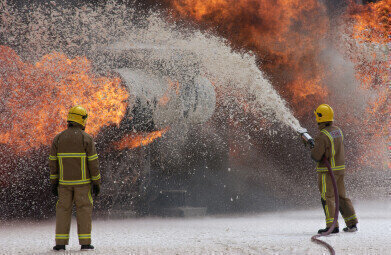Water/wastewater
What is firewater and how does it pollute the environment?
Dec 01 2023
Firewater, a term often used in environmental contexts, refers to water used in firefighting operations that becomes contaminated with various substances. It carries a mix of chemicals, oils, soot, and other hazardous materials from the fire site. Understanding firewater is essential for industries and environmental agencies to comply with environmental regulations and protect ecological health.
The composition of firewater varies based on the fire it combats. In industrial settings, fires can involve a range of materials, from organic compounds to synthetic chemicals, making the firewater a complex cocktail of these substances. Key contaminants include heavy metals from electronic waste or metalwork, hydrocarbons in petrochemical fires, and firefighting chemicals like fire retardants and foam, which contain per- and polyfluoroalkyl substances (PFAS). These substances are persistent in the environment and potentially harmful to health.
The environmental impact of firewater is significant, affecting both water sources and the broader ecosystem. It poses primary concerns for the contamination of groundwater and surface water bodies, as it can seep into the soil or run off into nearby streams and rivers. The toxic substances in firewater pose risks to aquatic life and can disrupt ecosystems. Additionally, firewater can lead to soil contamination, affecting plant life and potentially entering the food chain. Evaporation of contaminated water can also release volatile compounds into the air, contributing to air pollution.
Globally, regulations are in place to manage the environmental impact of firewater. These regulations often require industries to conduct risk assessments, implement containment measures to prevent firewater from entering natural water sources, and ensure proper treatment and disposal of contaminated firewater before disposal. Compliance with these regulations is not just a legal obligation but a crucial step in environmental stewardship.
In response to the environmental challenges posed by firewater, new technologies and methods are emerging. These include innovative firefighting techniques that use less water or alternatives to traditional firefighting chemicals, advanced treatment systems for removing contaminants from firewater, and improved containment methods to prevent firewater from spreading into the environment.
Firewater, a byproduct of firefighting efforts, poses significant environmental risks. Its management is a complex challenge that requires understanding its composition, mitigating its impact, and complying with stringent regulations. As technology advances, more effective solutions are emerging. Industries, regulatory bodies, and environmental scientists must collaborate to ensure that firewater does not become an overlooked pollutant, preserving our water sources and ecosystems for future generations.
Digital Edition
IET 35.2 March
April 2025
Air Monitoring - Probe Sampling in Hazardous Areas Under Extreme Conditions - New, Game-Changing Sensor for Methane Emissions - Blue Sky Thinking: a 50-year Retrospective on Technological Prog...
View all digital editions
Events
May 06 2025 Nuremberg, Germany
May 10 2025 Karachi, Pakistan
May 11 2025 Vienna, Austria
May 11 2025 Seoul, South Korea
Salon Analyse Industrielle & Instrumentation
May 14 2025 Paris, France


.jpg)



.jpg)


_(4427399123)-(2).jpg)









